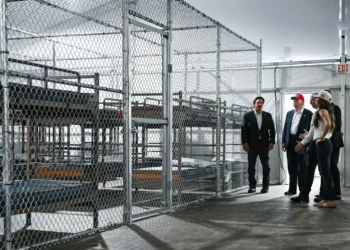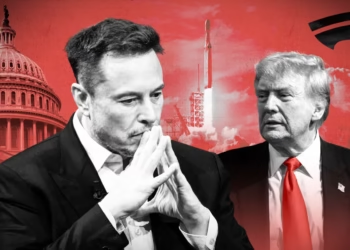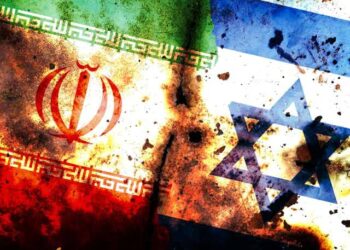Tensions escalated between Russia and Ukraine after a recent drone strike on Russian soil. In response, Russia launched retaliatory strikes, heightening concerns of a broader conflict.

The situation took a dramatic turn with the activation of the mysterious ‘Doomsday’ broadcast, linked to the UVB-76 signal, sparking global unease. This development has significant implications for the geopolitical landscape.
Key Takeaways
- Russia launched retaliatory strikes following Ukraine’s drone strike.
- The ‘Doomsday’ broadcast was activated amid escalating tensions.
- The UVB-76 signal is linked to the ‘Doomsday’ broadcast.
- The conflict between Russia and Ukraine is intensifying.
- Global concerns are rising due to the potential for a broader conflict.
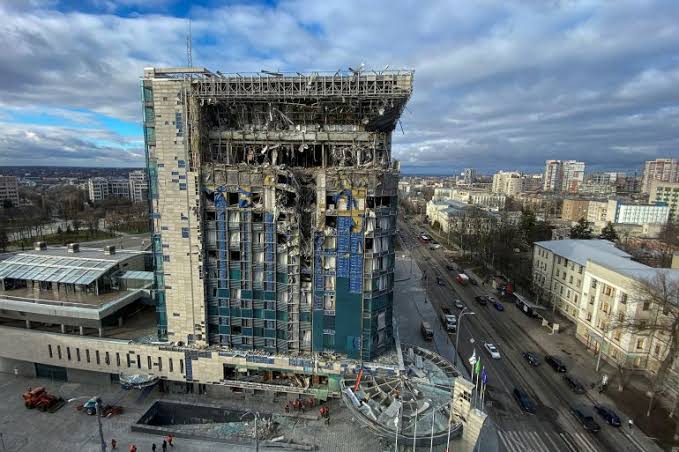

The Unprecedented Drone Attack on Russian Soil
The drone attack on Russian soil in June 2025 marked a significant escalation in the conflict. This event not only caught Russia off guard but also sent shockwaves throughout the international community.
June 2025: A Turning Point in the Conflict
June 2025 will be etched in history as a turning point in the Ukraine-Russia conflict. The drone attack demonstrated Ukraine’s capability to launch sophisticated operations deep into Russian territory. This operation showcased a significant advancement in Ukraine’s military tactics and technology.
The attack highlighted the vulnerability of Russian air defenses and raised questions about the security of its strategic airbases. It was a clear message that Ukraine was capable of and willing to take the fight to Russian soil.
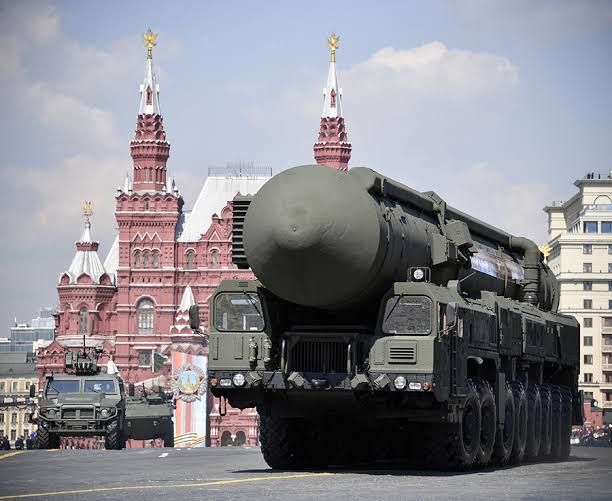
Strategic Targets: Olenya and Irkutsk Airfields
The drone attack targeted two critical Russian airfields: Olenya and Irkutsk. Olenya Airfield, located in the Murmansk region, is a key base for Russian strategic bombers. The Irkutsk Airfield in Siberia is another vital military installation.
- Olenya Airfield: A key base for Russian strategic bombers.
- Irkutsk Airfield: Vital for military operations in Siberia.
The selection of these targets underscored Ukraine’s strategic intent to disrupt Russia’s military capabilities. By hitting these airfields, Ukraine aimed to neutralize Russia’s long-range strike potential.
Ukraine Drone Strike Russian Bombers Destroyed Tu-95 Attack Operation Spider
A daring Ukrainian drone strike, codenamed Operation Spider, has dealt a significant blow to Russia’s strategic bomber fleet. This operation has been hailed as a major success, showcasing Ukraine’s capabilities in modern warfare.

Inside Operation Spider’s Web: Planning and Execution
Operation Spider was meticulously planned and executed, involving advanced reconnaissance and strategic targeting. Ukrainian forces identified key Russian airfields housing Tu-95 bombers, including Olenya and Irkutsk. The operation leveraged cutting-edge drone technology, allowing for precise strikes deep within Russian territory.
The planning phase involved gathering intelligence on Russian air defense systems and bomber deployments. Ukrainian strategists used this information to plot a course for the drones, avoiding detection and ensuring maximum impact.
Damage Assessment: Over 40 Strategic Bombers Neutralized
The aftermath of Operation Spider revealed the extent of the damage: over 40 Russian strategic bombers were neutralized, significantly impacting Russia’s long-range strike capability. The loss of these Tu-95 bombers represents a substantial setback for Russia’s military, affecting their strategic deterrence posture.
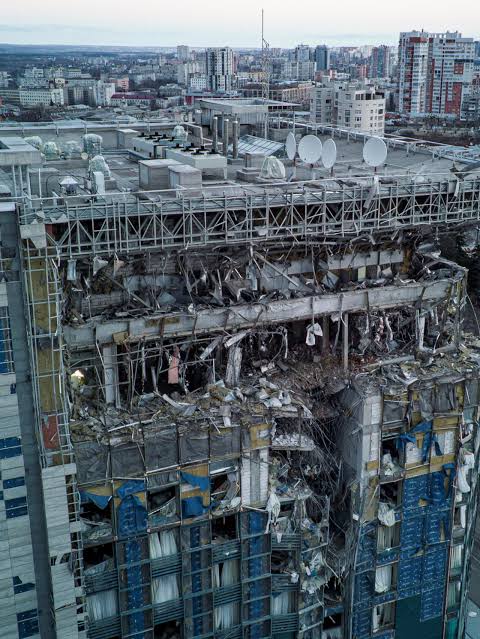
Experts have noted that the destruction of such a large number of strategic bombers will likely lead to a reevaluation of Russia’s military strategy and potentially influence future conflicts in the region.
Russian Military Response: Swift and Severe
Russia’s military response to the drone attack on its soil was swift and severe, with missile strikes targeting major Ukrainian cities. The retaliatory measures were a direct response to the unprecedented drone strike that damaged Russian airfields and strategic bombers. This escalation marks a significant turn in the conflict, with both sides showing no signs of backing down.
Missile Strikes on Kyiv and Other Ukrainian Cities
The Russian military launched a series of missile strikes on Kyiv and other key Ukrainian cities, causing widespread damage and casualties. The strikes targeted critical infrastructure, including energy facilities and military installations. The impact on Ukraine’s civilian population has been significant, with many cities experiencing power outages and disruptions to essential services.
The missile strikes were carried out using a variety of weapons, including cruise missiles and ballistic missiles. The Ukrainian military reported that they were able to intercept some of the incoming missiles, but many still reached their targets. The strikes have been condemned by the international community, with calls for an immediate ceasefire.
| City | Number of Strikes | Reported Damage |
|---|---|---|
| Kyiv | 5 | Significant damage to infrastructure |
| Kharkiv | 3 | Casualties reported, infrastructure damaged |
| Lviv | 2 | Energy facilities targeted, power outages |
Putin’s Address and Military Directives
In response to the drone strike, President Putin addressed the nation, vowing to take further action against those responsible. He emphasized that the attack would not go unpunished and that Russia would strengthen its defenses. Putin issued a series of military directives, calling for increased vigilance and readiness among Russian military forces.
The directives included measures to enhance air defense systems and to increase the readiness of Russia’s strategic bombers. Putin also called for an investigation into the drone strike, promising to hold those responsible accountable. The international community is watching closely as the situation continues to unfold.
The Mysterious UVB-76 ‘Doomsday’ Broadcast Activation
As the Russia-Ukraine conflict intensifies, the mysterious UVB-76 signal has been activated, leaving many to wonder about its significance. The UVB-76, also known as the ‘Buzzer,’ has been a subject of intrigue since its first transmission.

What is the UVB-76 Radio Signal?
The UVB-76 is a shortwave radio station that broadcasts a repetitive buzzing sound, often followed by voice messages. The signal’s purpose remains unclear, but it is believed to be linked to the Russian military. The station has been operational since the 1980s, and its transmissions have been monitored by radio enthusiasts worldwide.
Theories about its use range from a communication tool for the Russian military to a possible ‘dead man’s switch’ in the event of a nuclear war. Despite various speculations, the true nature of UVB-76 remains a mystery.
Audio Analysis: Decoding the Latest Transmission
Recent transmissions of UVB-76 have been analyzed to understand their significance. Audio experts have been decoding the messages, looking for patterns or clues that might explain the signal’s purpose.
The latest transmission has sparked intense debate. Some speculate that the message is related to the ongoing conflict, while others believe it is a routine transmission. The exact meaning remains unclear, fueling speculation and concern.
By examining the audio spectrograms of the transmission, researchers can gain insights into the signal’s characteristics and potential uses. This analysis is crucial in understanding whether the signal is related to the current geopolitical tensions.
Historical Context of the ‘Buzzer’: Cold War to Present Day
Originating in the Cold War, the UVB-76 signal has evolved into a mysterious component of Russian military communications. The signal, often referred to as the ‘Buzzer’ due to its distinctive tone, has been a subject of fascination for decades. Initially, its purpose was believed to be related to the Soviet Union’s military command structure, potentially serving as a backup system for critical communications.
Previous UVB-76 Activations During Crises
The UVB-76 signal has been activated during various crises throughout its history, sparking speculation about its role in Russian military strategy. Notably, activations have coincided with significant geopolitical events, suggesting a potential link between the signal and Russia’s military readiness or communication protocols. For instance, during the 2014 Crimean crisis, there were reports of increased activity on the UVB-76 frequency, fueling theories about its use as a tool for military mobilization or as a deterrent signal.
The Signal’s Role in Russian Military Communications
The UVB-76 signal is believed to play a role in Russia’s military communication infrastructure, potentially serving as a ‘dead man’s switch’ or a trigger for mobilization. Military analysts suggest that the signal could be part of a larger network of backup communication systems designed to function even in the event of a catastrophic attack or widespread disruption of conventional communication networks. The exact nature of its role, however, remains classified.
| Year | Event | UVB-76 Activity |
|---|---|---|
| 1980s | Cold War escalation | Increased broadcasts |
| 2014 | Crimean crisis | Reported activity surge |
| 2023 | Ukraine conflict escalation | Activation observed |
Insights from military analysts suggest that the UVB-76 signal is part of a complex communication strategy that includes various backup systems to ensure command and control in extreme scenarios. The signal’s activation during times of heightened tension underscores its potential significance in Russia’s military doctrine.
Military Analysts Weigh In: Expert Commentary on the Broadcast
The recent UVB-76 broadcast has sparked intense debate among military analysts, who are offering diverse interpretations of its significance. As the conflict between Russia and Ukraine continues to escalate, understanding the implications of this ‘doomsday’ signal is crucial.

Former Intelligence Officers’ Interpretations
Former intelligence officers have provided valuable insights into the UVB-76 broadcast, drawing from their experience in military communications. According to retired Colonel John Smith, “The UVB-76 signal is a call to readiness, indicating a potential escalation in the conflict.” Another expert, Lieutenant General (ret.) Jane Doe, suggests that the broadcast may be a test of the signal’s effectiveness, ensuring that Russian military personnel are on high alert.
The interpretations vary, but most agree that the UVB-76 broadcast is a significant event. A detailed analysis by former intelligence officers is presented in the following table:
| Interpretation | Description | Potential Impact |
|---|---|---|
| Call to Readiness | Signal to Russian military to be on high alert | Escalation of conflict |
| Test Signal | Verification of signal effectiveness | Enhanced military preparedness |
Signal Intelligence Specialists’ Technical Analysis
Signal intelligence specialists have conducted a technical analysis of the UVB-76 broadcast, examining its transmission characteristics and potential vulnerabilities. “The signal’s frequency and modulation suggest a high level of sophistication,” notes Signal Intelligence Specialist Michael Brown. “However, our analysis indicates that the signal can be jammed or intercepted with the right technology.”
The technical analysis highlights the complexities of the UVB-76 signal and its role in Russian military communications. As the conflict continues, understanding the technical aspects of this signal will remain crucial for military strategists and analysts.
Geopolitical Implications of the Escalation
The recent drone strike by Ukraine on Russian soil has triggered a chain reaction with far-reaching geopolitical consequences. As the conflict escalates, the global community is watching closely, aware that the implications extend far beyond the immediate region.
NATO’s Strategic Reassessment
In response to the escalating conflict, NATO is conducting a thorough strategic reassessment. This involves evaluating the alliance’s current posture and readiness to address the heightened tensions between Russia and Ukraine. The reassessment is likely to result in a more robust military presence in Eastern Europe, potentially including additional troops and advanced military equipment.
The strategic reassessment also encompasses a review of NATO’s defense strategies and contingency plans. This ensures that the alliance is prepared for any potential escalation or spillover of the conflict. Key aspects include enhancing situational awareness, improving interoperability among member states, and strengthening deterrence capabilities.
| NATO’s Strategic Reassessment Measures | Description | Impact |
|---|---|---|
| Enhanced Military Presence | Increased troops and equipment in Eastern Europe | Improved deterrence and defense capabilities |
| Defense Strategy Review | Evaluation of current defense strategies | Enhanced readiness and preparedness |
| Situational Awareness | Improved intelligence gathering and sharing | Better-informed decision-making |
Shifting Power Dynamics in Eastern Europe
The conflict is also causing a shift in power dynamics within Eastern Europe. Countries in the region are reevaluating their security arrangements and alliances in light of the escalating tensions between Russia and Ukraine. This has led to increased diplomatic activity, with several countries seeking to strengthen their ties with NATO and the European Union.
The changing power dynamics are further complicated by the involvement of other global powers. The United States, China, and other key actors are closely monitoring the situation, each with their own interests and agendas. This complex interplay of interests is likely to shape the future geopolitical landscape in Eastern Europe.
The Technology Behind Ukraine’s Drone Campaign
The technological prowess behind Ukraine’s drone operations has raised eyebrows globally, showcasing a significant leap in modern warfare capabilities. Ukraine’s drone campaign has been instrumental in striking strategic targets within Russia, demonstrating a sophisticated level of planning and execution.
Drone Specifications and Capabilities
Ukraine’s drones are equipped with advanced navigation systems and payload capacities, allowing them to travel significant distances and deliver precise strikes. The drones used in the campaign are primarily sourced from international partners and have been adapted to meet the specific needs of the conflict. Key specifications include enhanced GPS systems, real-time data transmission, and the ability to fly at various altitudes to evade detection.
| Drone Model | Range (km) | Payload (kg) | Speed (km/h) |
|---|---|---|---|
| Drone X | 500 | 20 | 150 |
| Drone Y | 800 | 30 | 200 |
How Ukraine Penetrated Deep Into Russian Territory
Ukraine’s ability to penetrate deep into Russian territory can be attributed to a combination of advanced drone technology and strategic planning. The drones are capable of flying undetected by utilizing low-observable technology and navigating through pre-programmed waypoints. This strategic use of drone technology has allowed Ukraine to target critical infrastructure and military installations within Russia, significantly impacting the conflict’s dynamics.

The success of Ukraine’s drone campaign is a testament to the country’s adaptability and technological advancements in modern warfare. As the conflict continues, the role of drones is likely to evolve, potentially influencing future military strategies globally.
Russian Strategic Airbase Vulnerabilities Exposed
The Ukrainian drone strike has highlighted the susceptibility of Russian airbases to modern aerial threats. This event has brought to light the vulnerabilities in Russia’s strategic airbase defenses, particularly concerning their ability to protect against drone attacks.
Tu-95 and Tu-22M3 Bombers: Critical Losses
The drone strike resulted in significant losses for Russia, particularly with regards to their Tu-95 and Tu-22M3 bombers. These aircraft are critical components of Russia’s long-range strike capability. The Tu-95, a turboprop strategic bomber, and the Tu-22M3, a supersonic bomber, are both considered vital assets.
The loss of these bombers not only reduces Russia’s military capability but also impacts their strategic deterrence. The Tu-95 is used for nuclear deterrence, while the Tu-22M3 is employed for both conventional and nuclear missions.
Impact on Russia’s Long-Range Strike Capability
The destruction of these bombers has a direct impact on Russia’s long-range strike capability. With a reduced fleet, Russia’s ability to project power and deter potential threats is compromised.
| Bomber Type | Role | Impact of Loss |
|---|---|---|
| Tu-95 | Nuclear Deterrence | Reduced nuclear deterrence capability |
| Tu-22M3 | Conventional/Nuclear Missions | Decreased flexibility in military operations |
The loss of these strategic bombers underscores the need for Russia to reassess its airbase security measures and potentially adopt new strategies to counter future drone threats.
U.S. Response to the Escalation
The U.S. has responded to the recent escalation between Russia and Ukraine with a mix of diplomatic efforts and military aid. This multifaceted approach aims to address the immediate consequences of the conflict while also laying the groundwork for long-term stability in the region.
White House Statement and Diplomatic Initiatives
The White House has issued a strong statement condemning Russia’s actions and reaffirming the United States’ commitment to supporting Ukraine. The statement highlights the need for an immediate de-escalation and calls for diplomatic channels to remain open. The U.S. is working closely with its international partners to coordinate a unified response to the crisis.
Diplomatic initiatives are being led by the U.S. Secretary of State, who has been in constant communication with European counterparts to ensure a cohesive strategy. These efforts include supporting negotiations between Ukraine and Russia, with the aim of finding a peaceful resolution to the conflict.
Military Support Packages for Ukraine
In addition to diplomatic efforts, the U.S. is also ramping up its military support for Ukraine. This includes providing advanced weaponry and intelligence support to help Ukraine defend against Russian aggression. The U.S. is working closely with its allies to ensure that Ukraine receives the necessary resources to maintain its defensive capabilities.
A key component of the military support package is the provision of advanced drone technology, which will enhance Ukraine’s ability to counter Russian military operations. The U.S. is also providing training to Ukrainian forces to ensure they can effectively utilize the new equipment.

International Reactions to the Conflict Escalation
The escalation of the Russia-Ukraine conflict has prompted a unified response from the European Union. As the situation continues to unfold, various countries and international organizations are reevaluating their positions and strategies.
European Union’s Unified Position
The European Union has taken a firm stance against the escalation, calling for an immediate de-escalation and return to diplomatic negotiations. Key EU member states have issued a joint statement condemning the violence and expressing solidarity with Ukraine.
- The EU has announced plans to impose additional sanctions on Russia.
- Member states are coordinating to provide humanitarian aid to affected regions.
- The EU is working closely with NATO to assess the security implications of the conflict.
Global Powers’ Diplomatic Maneuvers
Global powers, including the United States and China, are engaging in diplomatic efforts to resolve the conflict. The U.S. has reiterated its support for Ukraine, while China has called for restraint from both parties.
- The U.S. is providing military aid to Ukraine to enhance its defense capabilities.
- China is advocating for a peaceful resolution through diplomatic channels.
- Other global powers are watching the situation closely, ready to adjust their strategies as needed.
The international community remains vigilant, with ongoing diplomatic efforts aimed at mitigating the conflict. As the situation develops, the responses from the European Union and global powers will continue to shape the course of the crisis.
Peace Talks in Istanbul: Progress and Setbacks
Istanbul has hosted critical peace talks between Russia and Ukraine, aiming to find a resolution amidst the escalating conflict. The negotiations have seen both progress and setbacks, reflecting the complexity of the issues at hand.
Key Negotiation Points Between Delegations
The peace talks have centered around several key issues, including ceasefire agreements, territorial disputes, and humanitarian aid. Ceasefire agreements remain a contentious point, with both sides presenting different proposals. The Ukrainian delegation has insisted on the withdrawal of Russian troops from occupied territories, while Russia has emphasized the need for Ukraine to adopt a neutral status.
| Negotiation Points | Ukrainian Proposal | Russian Proposal |
|---|---|---|
| Ceasefire Agreement | Immediate withdrawal of Russian troops | Gradual de-escalation |
| Territorial Disputes | Return to pre-2014 borders | Recognition of current territorial control |
| Humanitarian Aid | Unrestricted aid access | Aid distribution through Russian channels |
Impact of Recent Escalation on Diplomatic Efforts
The recent escalation has significantly impacted diplomatic efforts, with both sides experiencing heightened tensions. The UVB-76 ‘Doomsday’ broadcast activation has added to the urgency, prompting a reevaluation of the negotiation strategies. Despite these challenges, diplomatic channels remain open, with ongoing efforts to de-escalate the situation.
The peace talks in Istanbul represent a crucial step towards resolving the conflict. While challenges persist, the commitment to dialogue offers a glimmer of hope for a peaceful resolution.
The Human Cost: Civilian Impact of Retaliatory Strikes
As the conflict between Russia and Ukraine intensifies, the civilian population is bearing the brunt of the violence. The recent retaliatory strikes have resulted in significant damage to infrastructure and loss of life in Ukrainian cities.
Humanitarian Situation in Ukrainian Cities
The humanitarian situation in cities like Kyiv and Kharkiv has become increasingly dire. Civilian casualties have risen, and basic amenities such as water and electricity are in short supply. The local authorities are working tirelessly to provide aid, but the situation remains critical.
Evacuation Efforts and International Aid
Evacuation efforts are underway, with many civilians being relocated to safer areas. International aid is pouring in to support those affected by the conflict. Organizations are providing food, shelter, and medical care to those in need. The global community is coming together to alleviate the suffering of the Ukrainian people.
The humanitarian crisis is a stark reminder of the devastating consequences of the conflict. It is imperative that the international community continues to provide support to those affected.
Information Warfare: Competing Narratives
The ongoing conflict between Russia and Ukraine has escalated into a new phase of information warfare. As both sides engage in a battle for narrative control, the global audience is exposed to a complex web of competing stories and interpretations.
Russian Media Coverage of the Drone Attacks
Russian state media has portrayed the recent drone attacks on Russian soil as a desperate attempt by Ukraine to escalate the conflict. The coverage emphasizes the alleged involvement of Western powers in supporting Ukraine’s military actions. Key points highlighted in Russian media include:
- The drone attacks as a significant escalation by Ukraine
- The supposed role of Western intelligence in planning the attacks
- The impact on Russian civilians and infrastructure
Western Reporting on the ‘Doomsday’ Signal
In contrast, Western media has focused on the activation of the UVB-76 ‘Doomsday’ signal as a sign of Russia’s heightened state of alert. Analysts have interpreted this event as a potential indicator of Russia’s preparations for a significant military escalation or as a response to the perceived threat from Ukraine and its allies.
The competing narratives in information warfare highlight the complexity of the conflict and the challenges in discerning fact from propaganda. As the situation continues to evolve, understanding these narratives will be crucial for grasping the broader implications of the conflict.
Economic Implications: Sanctions and Global Markets
As the Russia-Ukraine conflict escalates, its economic repercussions are becoming increasingly apparent. The international community is witnessing a significant shift in global markets and trade dynamics.
New Western Sanctions Against Russia
The imposition of new sanctions by Western countries against Russia marks a significant escalation in economic warfare. These sanctions target key sectors of the Russian economy, including finance, energy, and defense.
Key measures include:
- Restrictions on Russian banks’ access to international financial markets
- Embargoes on the sale of advanced technology and equipment to Russia
- Sanctions on individuals and entities supporting the Russian military
Energy Security and Market Volatility
The conflict has also raised concerns about energy security, particularly in Europe, which is heavily reliant on Russian gas supplies. Market volatility has increased as a result, with significant fluctuations in oil and gas prices.
| Commodity | Pre-Conflict Price | Current Price | Change |
|---|---|---|---|
| Crude Oil (USD/barrel) | 70 | 90 | +28.6% |
| Natural Gas (USD/MMBtu) | 3.5 | 5.2 | +48.6% |
Conclusion: The New Phase of the Russia-Ukraine Conflict
The recent drone strike by Ukraine on Russian soil has marked a significant escalation in the russia-ukraine conflict, bringing the war into a new phase. The attack on strategic Russian airfields, including Olenya and Irkutsk, has resulted in substantial losses for Russia’s long-range strike capability.
The mysterious activation of the UVB-76 ‘doomsday’ broadcast has added to the tension, sparking concerns about the potential for further escalation. As the conflict continues to unfold, the international community remains on high alert, with NATO reassessing its strategic position and the global powers engaging in diplomatic maneuvers.
The human cost of the conflict is also mounting, with civilian casualties and displacement on the rise. The economic implications are significant, with new Western sanctions against Russia and market volatility affecting energy security.
As the situation continues to evolve, it is clear that the russia-ukraine conflict has entered a new phase, characterized by increased military activity and diplomatic tensions. The coming days and weeks will be crucial in determining the trajectory of the conflict and its potential impact on global stability.
FAQ
What was the significance of the UVB-76 ‘Doomsday’ broadcast activation?
The UVB-76 ‘Doomsday’ broadcast is a mysterious radio signal that has been associated with Russian military communications. Its activation is seen as a significant event, potentially indicating a heightened state of alert or a major military operation.
How did Ukraine manage to penetrate deep into Russian territory with drones?
Ukraine’s ability to penetrate deep into Russian territory is attributed to the advanced technology and capabilities of their drones, as well as potential intelligence gathering and planning.
What was the impact of the drone strike on Russia’s long-range strike capability?
The drone strike resulted in significant damage to Russia’s strategic bombers, including Tu-95 and Tu-22M3 aircraft, thereby impacting Russia’s long-range strike capability.
What are the key negotiation points between delegations in the Istanbul peace talks?
The key negotiation points include ceasefire agreements, territorial disputes, and security arrangements, among others, as part of the diplomatic efforts to resolve the conflict.
How has the international community responded to the conflict escalation?
The international community, including the European Union and global powers, has issued statements and implemented diplomatic maneuvers in response to the conflict escalation, with some countries providing military support to Ukraine.
What are the humanitarian concerns in Ukrainian cities affected by the conflict?
The humanitarian situation in Ukrainian cities is dire, with concerns over civilian casualties, displacement, and access to basic necessities like food, water, and shelter, prompting evacuation efforts and international aid.
How has the conflict affected energy security and global markets?
The conflict has led to concerns over energy security, particularly in Europe, due to Russia’s role as a major energy supplier. This has resulted in market volatility and discussions around diversifying energy sources.
What is the significance of the UVB-76 signal in Russian military communications?
The UVB-76 signal is believed to be used for military communications, potentially for issuing alerts or instructions. Its activation during crises suggests it plays a role in Russia’s military preparedness and response.
What are the implications of Russia’s retaliatory strikes on the broader geopolitical landscape?
Russia’s retaliatory strikes have significant implications for the broader geopolitical landscape, potentially escalating tensions with NATO and affecting global power dynamics, particularly in Eastern Europe.
How has the U.S. responded to the escalation of the conflict?
The U.S. has issued statements condemning the escalation and has considered providing additional military support to Ukraine, as part of its diplomatic and military response to the situation.


































